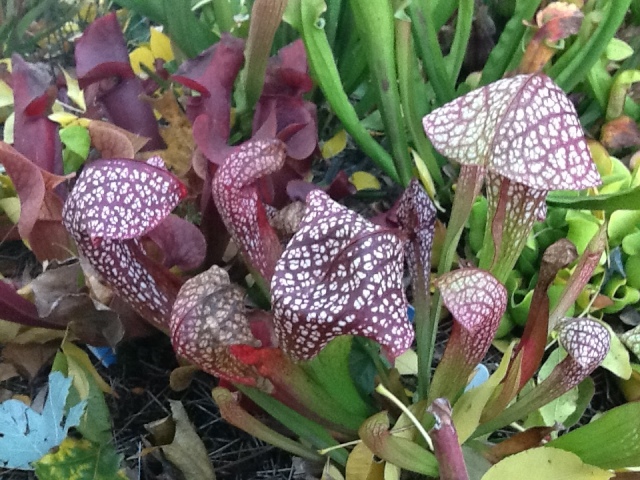As the title implies, this was probably the most packed day of the trip. We woke up in Crestview Florida, for those of you who don’t know where that is, its in the western Panhandle. maybe an hour or less from the Alabama border – and we ended our day in Kingsland Georgia, just north of Jacksonville FL! We covered a lot of ground!!!!
Ok, so our morning started of with a pile of biscuits smothered in white sausage gravy and bacon… yep, breakfast of champions! Our first stop was a pretty famous rubra gulfensis site – Turkey Hen Creek.
It’s a cold water creek with a white sandy bottom, only about knee deep. There is a large sandy parking area, with little islands of vegetation. Guess what? Those islands were covered with gulfensis… that was cool.
So we crossed the creek to where the plants were. I’m sure if we had time to walk the creek in either direction would likely find more plants. The gulfensis and other CP grow along the banks of the river.
Here is shot of the bank, you can clearly see the seedlings in the bottom right corner. The seedling activity at this site was amazing! Mixed in there were tons of D. intermedia!
We also found S. psittacina growing here… not only that, we also found a psit x gulfensis hybrid! That was cool. The other great find was P. primuliflora. It’s the only time on this trip I saw that species of Ping.
Again these were growing along the banks and shoals of the river!
After this we headed to a spot I couldn’t wait to see. My friend Randy found a site that housed the most enormous rubra gulfensis plants ever, I think I found one that was 36 inches long! Maybe 34… what’s two inches when its that big! If Jay were here now… he’d throw in “that’s what she said!” LOL. Anyway, Randy has been calling these plants “green giants” because they are a very light green color with very little veination, even growing in full sun.
The plants are growing literally aquatically around these spring fed, cold water spring ponds. Randy was good enough to bring a couple of Kayaks, so we could paddle out to them. Many were visible from paths around the pond, but seeing them from the kayak was the best way to see these plants.
There’s really not too much else to say about this site other than it was very cool… and the water is very refreshing… at least that’s what Randy and Marie said, I thought it was cold… lucky if it was above 70F at least that’s how it felt.
Here is a shot of a few clumps of gulfensis, using the trees for scale and seeing how far away my Kayak is… it’s easy to see how large these plants are.
In this photo you can see that these plants are growing on the surface of the pond. I used my paddle to check the depth of water under these plants… the paddle didn’t find the bottom, but I could see it – that’s how clear the water was. If you look in the water you can also see D. intermedia growing on the surface.
He’s a floater!
I can’t remember who spotted this guy, but he was hard to see in the tree.
From here we headed east with our next stop, the sinkhole lakes north of Panama City FL to see the red florida filiformis. However, before that, we made a stop to see some other wild plants… but that’s in the afternoon.
CJM







































































